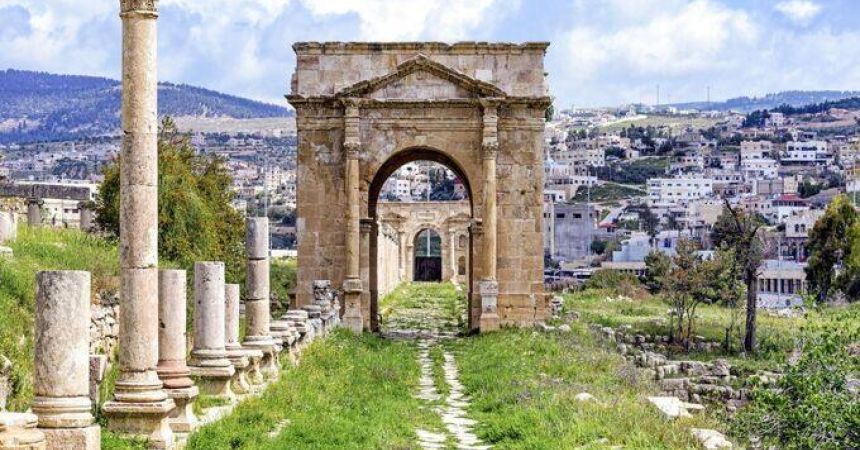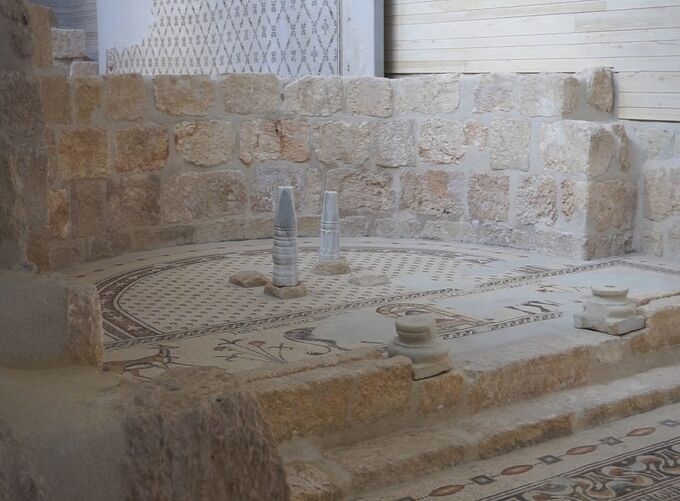
Exploring the Historic Citadel of Kerak in Jordan
Jordan, a land steeped in history and culture, is home to many remarkable sites. Among them, the Citadel of Kerak stands as a striking testament to the region’s medieval past. Overlooking the town of Kerak, this imposing fortress offers a glimpse into the complex history of the Crusader period and the strategic importance of this region. In this blog, we will delve into the rich history of the Citadel of Kerak, its architectural marvels, and practical tips for visitors looking to explore this historic site
Introduction to the Citadel of Kerak
Travel to The Citadel of Kerak is one of Jordan's most significant historical landmarks, strategically positioned on a hilltop in the town of Kerak. With its origins dating back to the 12th century, the citadel was built by the Crusaders during their conquest of the Holy Land. It served as a crucial military stronghold due to its strategic location on the main trade routes between Damascus and Cairo.
The fortress’s history is intertwined with the broader context of the Crusader Kingdom of Jerusalem and the subsequent Muslim reconquests. It stands as a monument to the region's tumultuous past and the strategic significance of Kerak in the medieval period.
Historical Significance
Crusader Era
The Citadel of Kerak was constructed by the Crusaders in 1142 AD under the orders of King Fulk of Jerusalem. It was designed as a key defensive fortress in the Crusader Kingdom of Jerusalem, situated on the main road linking the major cities of the Middle East. The fortifications were built to secure the route from Jerusalem to the Crusader-controlled regions in the south and to provide a base of operations against Muslim forces.
The Crusaders expanded the fortress over time, adding various structures and fortifications to enhance its defensive capabilities. The citadel became a significant center of Crusader activity, influencing the military and political landscape of the region.
Muslim Reconquest
In 1189, the citadel fell into the hands of the Muslim leader Saladin, who had been waging a campaign against the Crusader states. The fortress was recaptured by Saladin’s forces during the Siege of Kerak, a pivotal event in the history of the Crusades. Despite its fall, the citadel continued to play a strategic role in the region under various Muslim rulers.
During the Mamluk period (1250-1517), the fortress underwent further modifications and repairs, reflecting the evolving architectural and military needs of the time. The Mamluk rulers recognized the strategic importance of Kerak and maintained the fortress as a key military stronghold.
Ottoman Period and Modern Times in Jordan
The Ottoman Empire, which ruled over the region from the early 16th century until the end of World War I, also made some modifications to the citadel. However, the fortress gradually fell into disrepair during the Ottoman period.
In the 20th century, the Citadel of Kerak was restored and preserved as a historical and cultural site. Today, it stands as a significant tourist attraction, drawing visitors from around the world who come to explore its rich history and impressive architecture.
Architectural Marvels in Jordan
Outer Fortifications
The Citadel of Kerak is renowned for its impressive outer fortifications, which include massive walls, towers, and gatehouses. The fortress is built atop a steep hill, which adds to its defensive capabilities. The outer walls are constructed from local limestone and are characterized by their thick, sturdy construction designed to withstand sieges and attacks.
The Main Gate
The main entrance to the citadel is an imposing structure, featuring a series of fortified gates and a drawbridge. The gatehouse is equipped with defensive features such as arrow slits and a barbican, designed to protect the fortress from intruders.
Defensive Towers
The citadel’s outer walls are punctuated by several defensive towers, each equipped with lookout points and defensive mechanisms. These towers provided strategic vantage points for spotting approaching enemies and defending the fortress.
Inner Structures
The inner courtyard of the citadel contains a range of structures that reflect its historical significance and military function.
The Great Hall
The Great Hall, also known as the Hall of the Knights, is one of the most prominent structures within the citadel. This large hall was used for various purposes, including gatherings, feasts, and administrative functions. The hall’s vaulted ceilings and large windows offer a glimpse into the grandeur of the Crusader era.
The Chapel
The citadel also features a small chapel, reflecting the religious significance of the Crusader period. The chapel, with its simple yet elegant design, served as a place of worship for the Crusader inhabitants of the fortress.
The Storage Rooms
The citadel includes several storage rooms used for storing supplies, weapons, and other essential materials. These rooms were crucial for sustaining the fortress during sieges and military campaigns.
Architectural Features
The Keep
The keep, or central tower, is a prominent feature of the citadel’s design. It served as the primary defensive and administrative center of the fortress. The keep is characterized by its imposing height and robust construction, designed to provide maximum protection to the inhabitants.
The Water Supply System
One of the most impressive features of the Citadel of Kerak is its advanced water supply system. The fortress includes a network of underground cisterns and channels designed to collect and store rainwater. This system ensured a reliable water supply during sieges and extended periods of isolation.

The Living Quarters
The citadel’s living quarters provide insight into the daily life of its inhabitants. These quarters include living spaces for the knights and their families, as well as administrative and service areas. The layout of the living quarters reflects the hierarchical structure of the Crusader society.
Exploring the Citadel
Visitor Experience
Visiting the Citadel of Kerak offers a fascinating journey through history, with plenty to see and explore. Here are some tips to make the most of your visit:
Guided Tours
Consider joining a guided tour to Kerak gain a deeper understanding of the citadel’s history and significance. Knowledgeable guides can provide valuable insights and context, enhancing your overall experience.
Exploring the Ruins
Take your time to explore the various structures and ruins within the citadel. Wander through the courtyards, climb the towers, and examine the architectural details to appreciate the complexity and grandeur of the fortress.
Photography
The Citadel of Kerak offers numerous opportunities for photography, with its impressive architecture and panoramic views of the surrounding landscape. Be sure to capture the stunning vistas and intricate details of the fortress.
Local Culture
Take some time to explore the town of Kerak, which is located nearby. The town is known for its traditional markets, local crafts, and delicious Jordanian cuisine. Engaging with the local culture can provide a richer understanding of the region’s heritage.
Practical Information for Visitors
Getting There
Location
The Citadel of Kerak is located in the town of Kerak, approximately 120 kilometers south of Amman. The drive takes about 1.5 to 2 hours, depending on traffic.
Transportation
You can reach Kerak by car, taxi, or organized tour. Public transportation options are limited, so driving or booking a tour is the most convenient way to get there.
Opening Hours and Admission
Opening Hours
The citadel is generally open to visitors from 8:00 AM to 6:00 PM. However, opening hours may vary depending on the season and local holidays. It is advisable to check in advance before planning your visit.
Admission Fees
There is an entrance fee to visit the Citadel of Kerak. The fee is typically affordable, but it’s a good idea to check current rates and any additional costs for guided tours or special activities.
What to Bring to visit Jordan
Comfortable Clothing
Wear comfortable clothing and sturdy shoes, as you’ll be exploring the fortress’s uneven terrain and climbing stairs.
Sun Protection
The area can be sunny and hot, so bring sun protection such as a hat, sunglasses, and sunscreen.
Water and Snacks
Carry water and snacks to stay hydrated and energized during your visit, as there may be limited options for food and drink within the citadel.
Nearby Attractions to Kerak
While in Kerak, consider visiting other nearby attractions to enhance your experience:
Kerak Castle Museum
Located within the citadel, the Kerak Castle Museum provides additional historical context and displays artifacts from the Crusader period.
Dana Biosphere Reserve
A short drive from Kerak, the Dana Biosphere Reserve offers stunning natural landscapes and opportunities for hiking and wildlife viewing.
Petra
If you have additional time, consider visiting Petra, one of Jordan’s most famous archaeological sites, located about a 2-hour drive from Kerak.
Plan Your Dream Trip to Jordan Now
The Citadel of Kerak stands as a remarkable symbol of Jordan’s medieval history and architectural prowess. Its imposing walls, intricate structures, and strategic significance provide a fascinating glimpse into the past.



